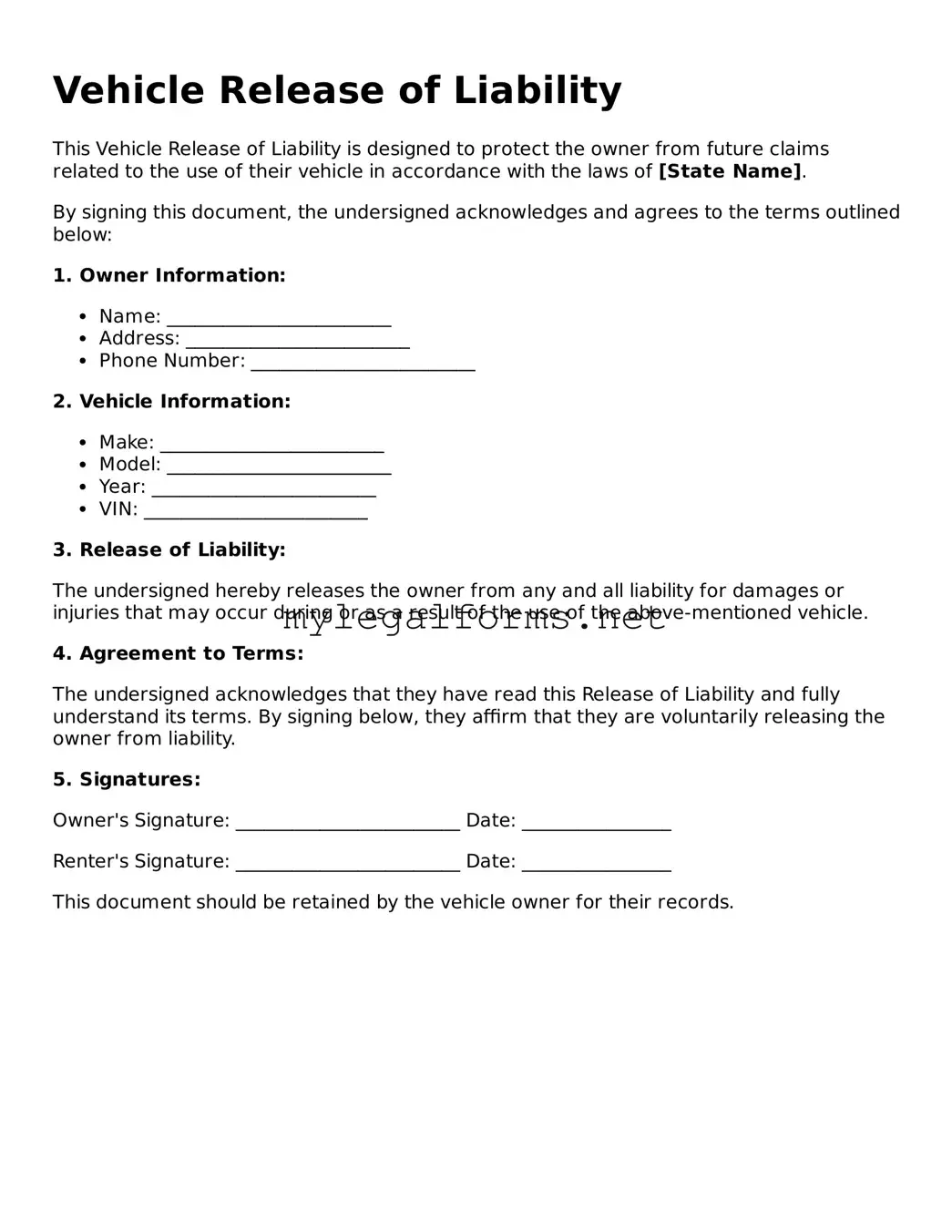Filling out a Vehicle Release of Liability form can seem straightforward, but many people make common mistakes that can lead to complications later on. One frequent error is not providing complete information. Every section of the form is important. Omitting details like the vehicle identification number (VIN) or the correct names of the parties involved can create confusion and delay the process.
Another mistake is failing to sign the form. While it may seem like a small oversight, a signature is crucial. Without it, the document is not legally binding. This can lead to disputes or misunderstandings about the release of liability, leaving all parties vulnerable.
Some individuals also forget to date the form. A date is essential for establishing when the release takes effect. Without it, there may be questions about the timing of the liability transfer, which can complicate matters if an issue arises later.
Additionally, people often overlook the need for witnesses or notarization. Depending on state laws, having a witness or a notary public may be required for the form to be valid. Neglecting this step can render the document ineffective, which is the last thing anyone wants when trying to protect themselves legally.
Another common mistake is not keeping a copy of the completed form. After filling it out, individuals should always retain a copy for their records. This serves as proof of the release and can be essential if questions arise in the future.
Some individuals also misinterpret the terms of the release. Understanding what liability is being released and under what conditions is vital. Misunderstanding these terms can lead to unintended consequences, including potential legal issues down the road.
Moreover, people sometimes fail to notify their insurance company about the release. This can create gaps in coverage or misunderstandings about liability in case of an accident. Keeping your insurer informed is a crucial step in the process.
Another mistake is using outdated forms. Laws and regulations can change, so using the most current version of the Vehicle Release of Liability form is important. Outdated forms may not comply with current legal standards, which could invalidate the release.
Finally, rushing through the process can lead to errors. Taking the time to carefully read and complete the form ensures that all necessary information is included and accurate. It’s better to spend a few extra minutes now than to deal with potential issues later.
